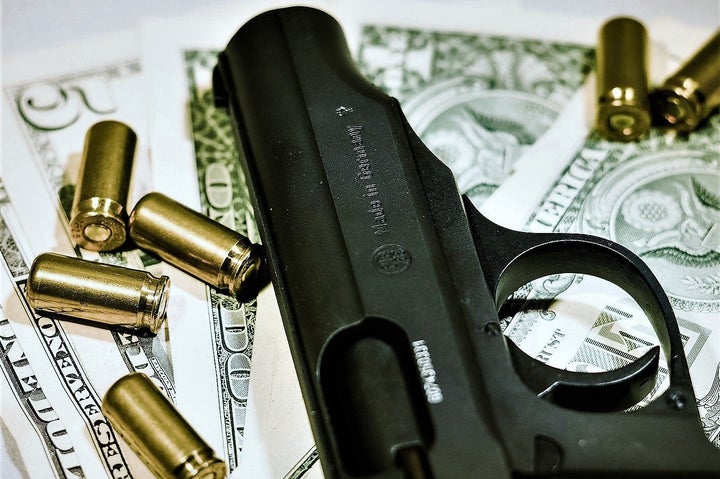
With an overwhelming 2.2 million people behind bars, it’s tempting to focus reform efforts on those convicted of non-violent offenses. And sure, they represent about half of the incarcerated population. But what about the other half?
A few months ago, I met five men serving life sentences for violent crimes, ranging from robbery to murder, at New York’s notorious Sing Sing Correctional Facility. They took turns introducing themselves. Each started with a heavy litany of numbers: “arrested at 16, convicted at 20, served 24 years.” Having spent most of their lives incarcerated, naturally they were all very different from who they were, some just children, at the start of their sentences.
Today, they prioritize community service as the leaders and active members of various organizations within the prison: the NAACP, Latinos Unidos, and the Jaycees among others. Each organization has a different charitable mandate. For example, one collects donations of school supplies to equip children visiting their parents at the institution with backpacks at the start of each school year.
In 2010, these men and others came together to form a group called Forgotten Voices, which sought to help the public combat gun violence and other social issues. Shortly thereafter, Superintendent Michael Capra took control of the facility and helped the men amplify their impact by supporting their efforts in meetings with state legislators, community organizers, and clergy.
He also invited elite multimedia professionals into the prison to help those convicted of capital crimes—some of whom now sat in front of me—share their narratives in hopes of persuading young people to put down their guns. Eventually, the men would come to be known as Voices From Within. But over the years, their efforts would go far beyond just heartfelt videos.
In 2012, Superintendent Capra assisted the men in partnering with local law enforcement to launch a gun buyback program. They boldly committed to fundraise for the initiative among their peers inside the prison’s walls. But as one might imagine, the limitations of the prison environment created some hurdles.
First, logistically, prisoners can’t physically handle money. Their funds are kept in institutional accounts, which makes collecting donations somewhat complicated. Second, and perhaps more importantly, their target audience was overwhelmingly cash poor. Statistically, most prisoners come from low-income backgrounds and depend on family and friends with similarly meager means for financial support during their incarceration. Even those who have prison jobs often earn only a few cents per hour.
But these obstacles didn’t stop them. The administration created a backend technology solution to collect pledged donations from prisoner accounts using the facility’s typical disbursement form. Meanwhile, the men recruited community organizations and churches to match their internally-raised donations. So, with these obstacles sorted out, they went cell-to-cell asking for donations as small as ten cents.
The men raised almost $4,000 from among the facility’s 1,600 prisoners. And still, they went looking for more. They asked the Inmate Liaison Committee, which manages a budget fundraised by prisoners for general population activities, to match that amount. The committee agreed. With that contribution, incredibly, the group raised nearly $8,000 from among prisoners at Sing Sing for a gun buyback program.
Sadly, their success exceeded the expectations of their community partners, who consequently withdrew their matching commitments. Not only did their withdrawal cause the men to lose credibility among their peers, but it also killed the effort because, at the time, it took precisely $16,000 to get a gun buyback program off the ground in New York City. The nearly $8,000 the prisoners raised is still sitting in an administrative account at Sing Sing waiting to be deployed.
As frustrating as that was to learn, perhaps my most sobering realization was that they didn’t do all this to protect themselves, but rather us in the free world—a world that has condemned them and a world many of them may never see again. Men ticketed daily for infractions like being “out of place” made a commitment to guard our freedom.
Through such collaborative efforts, Sing Sing’s administration and Voices From Within aim to redefine what it means to pay a debt to society. As the men say, “No debt is repaid just sitting in prison, but rather in working to heal the world we harmed.” But will we let them?
Many of these men now live in the country’s largest two prison units. Five tiers high and more than a football field in length, A-block holds about 700 prisoners. Just one tier shorter, B-block holds another 600. In these units, prisoners live in a honeycomb-like structure—geometrically stacked side-by-side and one on top of the other. Barred gates instantly expose multiple stories of caged humans. And an estimated half of them have life at the end of their sentences like the men I just met.
So, as I later stood with my back against the wall and peered inappropriately into their confined lives, I wondered how many donated to protect me and how many more wanted to. I wondered if, after 10, 15, 20, 25 years, we were prepared to forgive them and support their efforts to give back. And I wondered if we were doing enough with our freedom to advocate for theirs.
***
If you would like to donate to bring this gun buyback initiative to life and support the restorative efforts of the prisoners at Sing Sing Correctional Facility, please click here or visit the Corrections Accountability Project at correctionsaccountability.org.
***
Video Source: Voices From Within © 2015 Watch and Remember Productions
